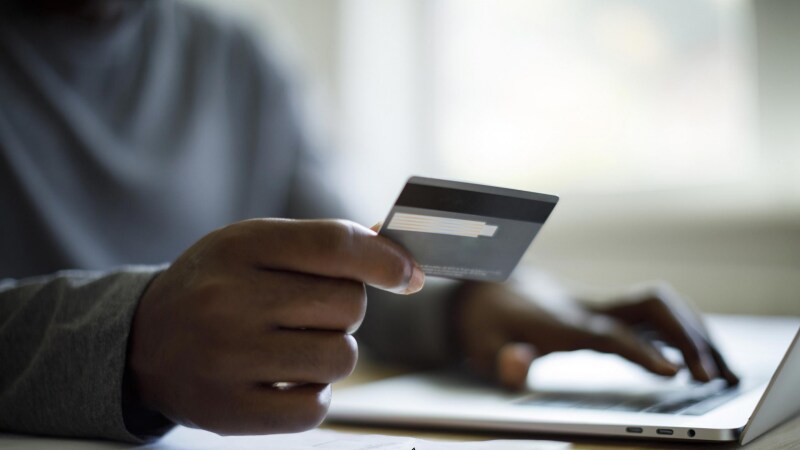How to avoid a penalty APR

You may not realize that for some credit cards, there is an APR (annual percentage rate) that is even higher than the regular purchase APR you pay to revolve a balance each month. In certain cases that are defined in your card's terms and conditions, such as not paying your bill for more than 60 days, a penalty APR may be applied. In order to avoid this higher APR, it's important to know what it is and what causes it to be triggered.
In this article, we'll discuss the following:
- What is a penalty APR?
- What triggers a penalty APR?
- How does a penalty APR work?
- How long does a penalty APR last?
- How can I avoid triggering a penalty APR?
- Does a penalty APR hurt my credit?
What is a penalty APR
A penalty APR is the interest rate charged if you trigger certain violations as stated in your card's terms and conditions. The most common violation is not paying your bill on time. The penalty APR is different than your purchase APR, which is the interest rate you are charged on a balance that remains at the end of a billing cycle. As long as you make the minimum payment that month, the purchase APR will be applied.
What triggers a penalty APR?
There are several events that may trigger a penalty APR. These include:
- You don't pay your bill on time or do not make at least the minimum payment due
- You exceed the credit limit of the card
- Your payment is returned because of insufficient funds or a closed account
Each credit card issuer usually outlines specific conditions for when they will apply a penalty APR, and they may vary depending on the issuer. You'll want to know these conditions, so be sure to read your credit card agreement.
How does a penalty APR work?
When a condition is violated and a penalty APR is triggered, it replaces your standard APR and will likely be higher.
However, there are certain guidelines that must be followed so that issuers cannot arbitrarily charge this penalty:
- There is a 21-day grace period from the end of a billing cycle before the standard APR is applied to the remaining balance.
- Federal law (via the Credit CARD Act of 2009), requires cardmembers to have a 45-day notice before applying a penalty APR.
- The penalty APR usually does not apply until your balance has been unpaid for more than 60 days. As always, consult your card's terms and conditions to understand how you will be affected.
How long does credit card penalty APR last?
If you've triggered a penalty APR, it will typically be in place for at least six months. Credit card issuers must review your account at least once every six months to see if the standard APR, which is lower, can be reinstituted. They will want to see that you've paid at least the minimum payment on time each billing cycle and that you've stayed within your credit limit. If you fail to do this, the penalty APR may remain.
How can I avoid triggering a penalty APR?
If you want to avoid triggering a penalty APR, be sure to make your payments on time. In addition, there are several other best practices.
Don't carry a balance
The most effective way to avoid a penalty APR, or any APR, is to pay off your entire balance in full and on time every month. If you never carry a balance from one month to the next, you will not accrue interest charges.
Always pay at least the minimum payment each month
If you make at least the minimum payment required on your bill each month and pay it on time, you can help avoid the penalty APR. Keep in mind, you will pay the standard APR on any remaining balance. So while you'll pay the lower of the two APRs, interest charges will still accumulate and if you're not careful, can add up over time.
Consider automatic payments
An automatic payment is a scheduled payment on a recurring basis to pay your credit card bill without you having to do anything manual to make it happen. You are authorizing the credit card issuer to deduct funds directly from your bank account on a specified date, either for the minimum payment due or the amount of your choice. It's widely offered, convenient and helps to ensure your payment is never forgotten or late. Please note that payments that are returned because of insufficient funds or a closed account can also trigger penalty APR.
Read your credit card agreement
A credit card agreement is a detailed summary of every aspect of how the lending relationship between you and the issuer will work. Generally, there are specific sections that outline how standard APRs are applied, how and when penalty APRs are applied, as well as other aspects of the card including fees or rewards (if applicable). It's important to read this agreement fully before using your card. If you know the terms of a penalty, you may be less likely to let it happen.
Set reminders
Don't underestimate the power of reminders. They can be helpful regardless of the technology used. This could be digital reminders added to your phone each month, email reminders from your card issuer, or simply a post-it note on your mirror. No matter your method, if you make it a priority to always pay your bill on time, it can help you avoid the penalty APR.
Sign-up for Chase Credit Journey®
If you're struggling to get a hold of your credit, educational resources may help. Chase Credit Journey® is a free online tool for anyone, not only Chase cardmembers, to see their credit score, credit balances, limits and credit history — all without impacting your score. It provides important insights into credit and offers an array of services for you to keep track of your credit. Not only will you receive a free credit score, you'll get information about what that score means and how you may be able to improve it.
Does a penalty APR hurt my credit?
Your credit score can be impacted in a negative way as a result of actions that lead to a penalty APR. This is because your payment history is a large part portion of the formula that generates your credit score. For example, VantageScore 4.0, counts your payment history as 41% of your overall credit score. If you are currently paying a penalty APR due to late or missed payments, those late or missed payments may cause a hit to your score. Issuers can report a late payment to credit bureaus after just 30 days.
In summary
Penalty APRs can be challenging to manage. A penalty APR is higher than a standard APR and could be triggered if you do not pay at least your minimum payment for more than 60 days. To help avoid accruing these higher interest charges you will want to pay your bill on time each month. There are several ways to help you accomplish this, including never carrying a balance, setting up auto payments and understanding your terms and conditions.



